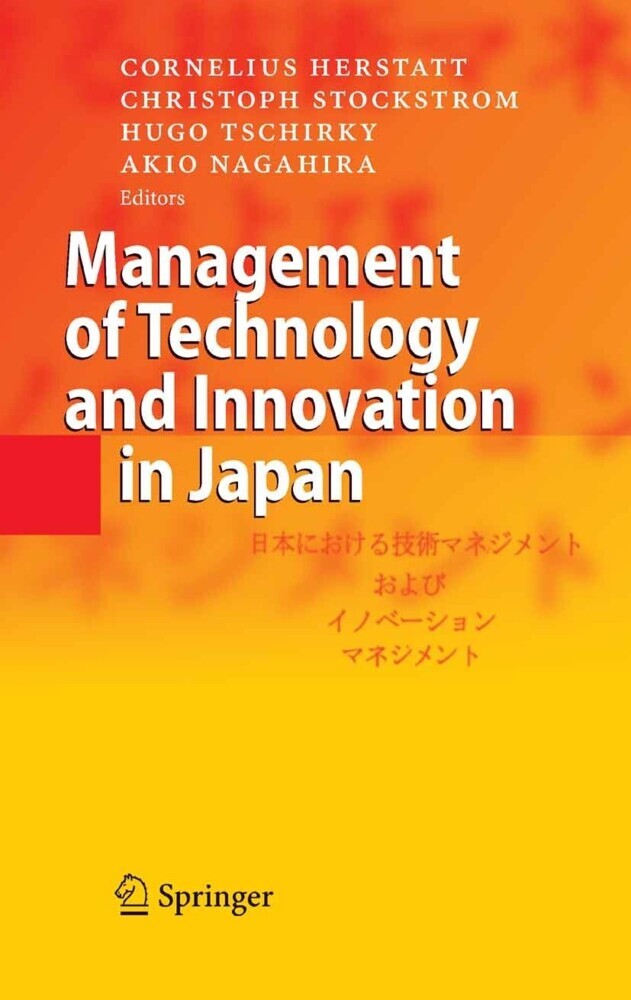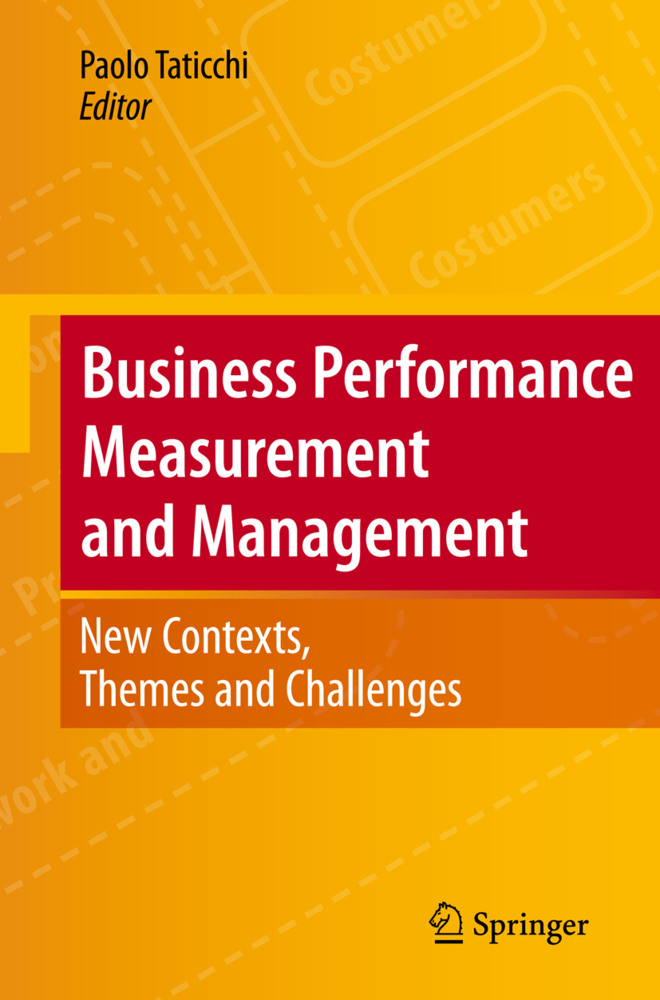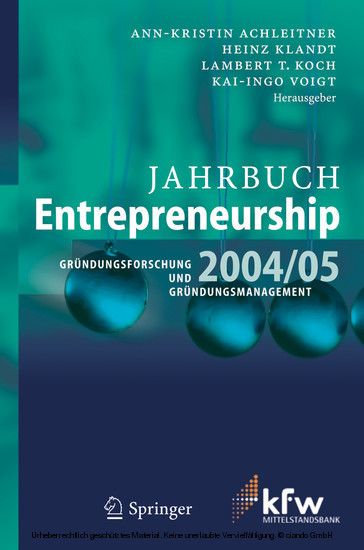Dynamics of Knowledge, Corporate Systems and Innovation
TBD
The theme of the book exactly matches the title: the dynamics of knowledge, the corporate system and innovation. Knowledge is created and accumulated in the corporate system, which seeks to utilize it to introduce innovation to the market and society. Corporate organizations generate new knowledge through their in-house R&D activities, and introduce new products and services to the market by combining their own new knowledge and the knowledge generated by others, e.g. universities. Thus, the corporate system is the essential linchpin between knowledge and innovation, and the interactive dynamics between knowledge, the corporate system, and innovation are extremely important. To understand and guide innovative activities in the society, deeper insights into these dynamics are crucial. This book is a step forward in that direction.
1;Preface;6 2;Contents;8 3;Contributors;10 4;Part I Perspectives;12 4.1;1 Organization Accumulates and Market Utilizes: A Framework of Knowledge-Corporate System-Innovation Dynamics;13 4.1.1;1.1 Corporate System as the Engine of Knowledge-Innovation Dynamics;13 4.1.1.1;1.1.1 Our Research Theme for the Twenty-First Century COE Program;13 4.1.1.2;1.1.2 Importance of Corporate System;15 4.1.2;1.2 Conceptual Framework;17 4.1.2.1;1.2.1 Conceptual Framework of Knowledge-Corporate System-Innovation Dynamics;17 4.1.2.2;1.2.2 Formation of Open Knowledge Base;19 4.1.2.3;1.2.3 Learning Activity by the Corporate Organization;21 4.1.3;1.3 Dynamics of Accumulation and Dynamics of Utilization;22 4.1.3.1;1.3.1 Two Dynamics;22 4.1.3.2;1.3.2 Organization Accumulates and Market Utilizes;23 4.1.3.3;1.3.3 Dilemmas Between Two Dynamics;25 4.1.4;1.4 Market-Oriented Corporate System and Organization-Oriented Corporate System: US Versus Japan;27 4.1.4.1;1.4.1 M System and O System;27 4.1.4.2;1.4.2 US Experiments and Japan Develops;29 4.1.4.3;1.4.3 Weakness;31 4.1.5;1.5 From Here to Where?;31 4.1.5.1;1.5.1 US as the Market Arena for the World;31 4.1.5.2;1.5.2 Where can Japan Go?;33 4.1.6;References;33 4.2;2 Boundaries of Innovation and Social Consensus Building: Challenges for Japanese Firms;35 4.2.1;2.1 Introduction;35 4.2.2;2.2 Types of Innovation by Boundary;36 4.2.2.1;2.2.1 Boundaries of Innovation: Four Levels;36 4.2.2.2;2.2.2 Determinants of Innovation;40 4.2.3;2.3 Boundaries of Innovation and Social Consensus Building;42 4.2.3.1;2.3.1 Coordination and Integration Mechanisms of the Japanese Corporate System;42 4.2.3.2;2.3.2 Innovation as Social Consensus Building;43 4.2.3.3;2.3.3 Consensus Building Beyond Community and Limitation of Japanese Firms;45 4.2.4;2.4 Innovation Challenges for Japanese Firms;47 4.2.4.1;2.4.1 Importance of Innovation Between Different Markets;47 4.2.4.2;2.4.2 Organizational Problems from Within;48 4.2.4.3;2.4.3 Challenges for Japanese Firms;50 4.2.5;References;50 4.3;3 Redefining Innovation as System Re-Definition;53 4.3.1;3.1 Introduction;53 4.3.2;3.2 Conceptual Understanding of Combinations in Product Systems;56 4.3.2.1;3.2.1 Function;58 4.3.2.2;3.2.2 Physical Parameters;59 4.3.2.3;3.2.3 Value;59 4.3.3;3.3 Dimensions of Product Innovation;60 4.3.3.1;3.3.1 Changes in Internal System;61 4.3.3.2;3.3.2 Changes in External System;64 4.3.4;3.4 Typology of Innovation;66 4.3.4.1;3.4.1 Liner Innovations;67 4.3.4.2;3.4.2 System Reconfiguration;68 4.3.4.3;3.4.3 Category Creation;69 4.3.5;3.5 Discussion and Implications;72 4.3.5.1;3.5.1 Mapping Models of Innovation;72 4.3.5.2;3.5.2 Difficulties Associated with Innovation;74 4.3.5.3;3.5.3 Technological Progress Smothers Innovation;76 4.3.5.4;3.5.4 Challenges for Japanese firms;79 4.3.6;3.6 Conclusion;82 4.3.7;References;84 4.4;4 Knowledge, Information, Rules, and Structures;86 4.4.1;4.1 Introduction;86 4.4.2;4.2 Prefatory Autobiographical Remarks;87 4.4.3;4.3 Information and Knowledge;90 4.4.4;4.4 Practice and Ontology;93 4.4.5;4.5 Do Organizations Think?;95 4.4.6;4.6 Self-Organization;97 4.4.7;4.7 Conclusions;102 4.4.8;References;102 4.5;5 The Replication Perspective on Productive Knowledge;104 4.5.1;5.1 Introduction;104 4.5.2;5.2 Conceptual Background;106 4.5.3;5.3 Examples;113 4.5.4;5.4 The Sources of Replication Difficulty;119 4.5.5;5.5 Perspectives on Replication Practice;125 4.5.6;References;128 5;Part II Issues;131 5.1;6 Organizational Deadweight and the Internal Functioning of Japanese Firms: An Explorative Analysis of Organizational Dysfunction;132 5.1.1;6.1 Introduction;132 5.1.2;6.2 Functionality and Dysfunctionality of Japanese Firms;133 5.1.2.1;6.2.1 Organizational Adaptation and Deterioration;133 5.1.2.2;6.2.2 Before the Bubble Burst: Emergent Strategy as a Source of Competitive Edges;135 5.1.2.3;6.2.3 After the Bubble Burst: The Dysfunction of Emergent Strategy;136 5.1.2.4;6.2.4 Common Attributes of Organizational Deterioration;138 5.1.3;6.3 Operationalization of Orga
Itami, Hiroyuki
Kusunoki, Ken
Numagami, Tsuyoshi
Takeishi, Akira
| ISBN | 9783642044809 |
|---|---|
| Artikelnummer | 9783642044809 |
| Medientyp | E-Book - PDF |
| Auflage | 2. Aufl. |
| Copyrightjahr | 2010 |
| Verlag | Springer-Verlag |
| Umfang | 358 Seiten |
| Sprache | Englisch |
| Kopierschutz | Digitales Wasserzeichen |











